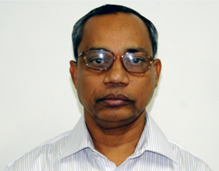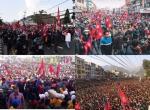Prime Minister Narendra Modi is paying a two-day visit to Singapore on September 4th and 5th on the second leg of his visit after visiting the oil rich Brunei. His visit to these two important Southeast Asian countries is taking place close on the heels of the visit of Vietnamese Prime Minister Pham Minh Chinh to India earlier in end July and visit of the of the Malaysian Prime Minister Seri Anwar Bin Ibrahim this month emphasizing the strategic significance that India attaches to the region and to India’s ‘Act East’ policy and the Indo-Pacific architecture. India has also injected fresh impetus to its strategic ties with Philippines which has locked horns with China in the contested waters in South China Sea by agreeing to sell the dreaded BrahMos missiles. The visit has to be seen in conjunction with contestation in the maritime domain in the expansive Indo-Pacific, although India’s relationship with the region including with Singapore is rooted in the mosaic of history, culture, ethnic and political dimensions’ and also trade and technology.
In the demographic profile of Singapore, the Indian community have been assimilated in the mosaic of the island nation. In Singapore, Tamil is one of the four official languages. Besides Tamil, the study of other Indian languages, namely Bengali, Gujarati, Hindi, Punjabi and Urdu have also been incorporated into Singapore’s school curriculum signifying the multiculturalism of the city state. In terms of historical connection, it must be mentioned that during the Second World War, when Japan occupied Singapore from 1942 to 1945, Indian nationalists’ aspirations with Japanese imperialist ambitions to bring an end to the British dominance in the East. It was in this backdrop that Singapore became the base from which efforts by the overseas Indians to jettison British rule in India was envisaged. The swift surrender of British forces in February 1942 created a temporary power vacuum which facilitated new actors to emerge on the political stage. One of the main parties was the Indian Independent League which was established under the Japanese auspices. Rash Behari Bose, who was based in Japan prior to his arrival in Singapore in late 1942, was appointed leader of the 12, 00- strong political organization. [1]
In post-Independent India, while India maintained around engagement with the region, India’s recognition of Heng Samrin regime in Cambodia in July 1980 riled the sentiment of the ASEAN. India’s tilt towards the erstwhile Soviet Union was also resented by the ASEAN. It was the end of cold war in 1991 and India’s economic reforms and liberalization that facilitated India’s ‘Look East Policy.’ Bilateral relations between India and Singapore intensified after the meeting between Prime Minister Narasimha Rao and his Singapore counterpart Goh Chok Tong on the margins of the Non-Aligned Summit in Jakarta in September 1992. At his National Day Rally speech in August 1993, Mr. Goh said that he would start a “mild India fever”. India’s “Look East Policy” was officially articulated in the Singapore Lecture delivered by Prime Minister Narasimha Rao during his visit to Singapore in 1994. Besides economic imperatives what impelled India’s Look East Policy was China’s assertiveness. Prime Minister Vajpayee was invited to the first ASEAN –India summit meeting in November 2002. Bilateral relation with Singapore also received a boost, when Prime Minister Vajpayee visited Singapore in April 2002. Ever since then successive prime ministers of the country have added heft to India’s engagement with Southeast Asia including Singapore. China’s rise and assertiveness in maritime domain in the Indo-Pacific including in the Indian Ocean Region; and attempts to rewrite the global order have added traction to India’s engagement in the region. Bilateral relation with Singapore received a boost, when Prime Minister Vajpayee visited Singapore in April 2002.
Prime Minister Modi has been a great admirer of Singapore and its model of governance and in particular of Lee Kuan Yew, the architect of modern Singapore. In fact, he flew to Singapore in March 2015 to pay tribute to the legendary leader. He also paid tribute to the great visionary of Singapore on his 100th birth anniversary in April 2023. What was significant is that Prime Minister Modi chose to travel to Singapore to address the prestigious Shangri La Dialogue in June 2018. It was for the first time that the Prime Minister of India delivered a lecture at the prestigious congregation of strategic thinkers and prcticenors of real politics like defense ministers, foreign ministers, and top defense personnel. The lecture if decoded, can be considered as finest exposition and elucidation of India’s ‘Act East’ policy and Singapore’s place in the constellation of Indo-Pacific architecture. He said that the world would be deeply influenced by the course of development in the Indo-Pacific region and noted that while the new age is resplendent with ‘promise’, it was also ‘caught in the shifting plates of global politics and the fault lines of history. It can be extrapolated that he alluded to the strategic rivalry and contestation between China and the democratic world led by the USA. As a statesman he exuded optimism that countries could shape the region in their collective hopes and aspiration. Applauding Singapore he said that when nations stand on the side of principles, not behind one power or the other, they earn the respect of the world and a voice in the international affairs. Alluding to the strategic significance of the region, Prime Minister Modi elucidated that “to the east, Malacca Strait and South China Sea connect India to the Pacific and to most of India’s major strategic partners-the ASEAN, Japan, Korea, China and the Americas.” [2]
Singapore’s democracy has its distinctive identity in terms of strict discipline, decorum and rule of law. As contrasted with democracies afflicted with compulsions of electoral politics and exuberance, Singapore epitomizes virtues and values of democracy in terms of transparency, honesty and good governance as contrasted with a totalitarian regime. Singapore does not behoove the pitfalls of extreme liberalism and indolence; rather it creates congeniality for excellence which in turn create wealth and welfare.
References
[1] Singapore and India: Towards a shared future, Institute of South Asian Studies, National University of Singapore,2015, p.32
[2] Prime Minister’s Keynote Address at Shangri La Dialogue, 1st June, 2018, Ministry of External Affairs, https://www.mea.gov.in/Speeches-Statements.htm?dtl/29943/Prime_Ministers_Keynote_Address_at_Shangri_La_Dialogue_June_01_2018
(The paper is the author’s individual scholastic articulation. The author certifies that the article/paper is original in content, unpublished and it has not been submitted for publication/web upload elsewhere, and that the facts and figures quoted are duly referenced, as needed, and are believed to be correct). (The paper does not necessarily represent the organisational stance... More >>
Image Source: https://www.pmindia.gov.in/en/image-gallery/#gallery10515611-10










Post new comment